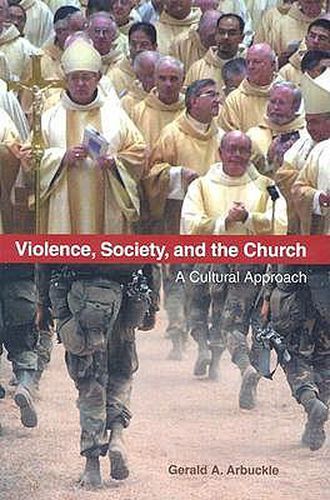Readings Newsletter
Become a Readings Member to make your shopping experience even easier.
Sign in or sign up for free!
You’re not far away from qualifying for FREE standard shipping within Australia
You’ve qualified for FREE standard shipping within Australia
The cart is loading…






Violence and its effects are constantly in the news, but the roots of that violence often go unexplained. Violence, Society, and the Church examines the cultural roots of violence and the processes in cultures that foster or allow violence to occur. Arbuckle analyzes society’s role in violence, the emergence of the New Right in Western societies, and cultural attitudes and issues concerning the Church. The power within mythologies and the process of using mythologies to legitimize violence against others and environment are explained. The concept of a culture having forces that resist change is a central theme, and Arbuckle proposes and studies four models of cultures: premodernity, modernity, postmodernity and paramodernity. The first three legitimize particular types of violence, and individuals move from one type to the other depending on the circumstances they face. The fourth model-paramodernity-describes people’s efforts to counter violence. Chapters are: Violence, Power, and Culture,
Premodernity and Violence,
Premodernity: Impact on Church,
Premodernity: Violence through Gossip, Shame, and Humor,
Modernity, Rationality, and Violence,
Destructive Envy, Jealousy, and Scapegoating in Modernity,
Postmodernity: Background to New Forms of Violence,
Demanding Certitudes: Ethnicity, Fundamentalism, Restorationationism, and Paramodern Culture: ‘Signals of Transcendence.
$9.00 standard shipping within Australia
FREE standard shipping within Australia for orders over $100.00
Express & International shipping calculated at checkout
Violence and its effects are constantly in the news, but the roots of that violence often go unexplained. Violence, Society, and the Church examines the cultural roots of violence and the processes in cultures that foster or allow violence to occur. Arbuckle analyzes society’s role in violence, the emergence of the New Right in Western societies, and cultural attitudes and issues concerning the Church. The power within mythologies and the process of using mythologies to legitimize violence against others and environment are explained. The concept of a culture having forces that resist change is a central theme, and Arbuckle proposes and studies four models of cultures: premodernity, modernity, postmodernity and paramodernity. The first three legitimize particular types of violence, and individuals move from one type to the other depending on the circumstances they face. The fourth model-paramodernity-describes people’s efforts to counter violence. Chapters are: Violence, Power, and Culture,
Premodernity and Violence,
Premodernity: Impact on Church,
Premodernity: Violence through Gossip, Shame, and Humor,
Modernity, Rationality, and Violence,
Destructive Envy, Jealousy, and Scapegoating in Modernity,
Postmodernity: Background to New Forms of Violence,
Demanding Certitudes: Ethnicity, Fundamentalism, Restorationationism, and Paramodern Culture: ‘Signals of Transcendence.